- Home
- Tanith Lee
White As Snow (Fairy Tale) Page 2
White As Snow (Fairy Tale) Read online
Page 2
Blood is a recurrent image in this story, warm red blood against virgin white snow. Three drops of blood symbolize Snow White’s conception. And the death of the (good) mother in childbirth. And menstruation: the beginning of both sexual maturation and the (bad) mother’s hatred. The queen demands blood on the knife of the hunter as proof that her daughter is dead, as instructed. The bloody meal she then makes of the heart carries the echo of ancient pagan beliefs in which ingesting an enemy’s flesh is a method of claiming their strength and their magic. Fairy tale writer Carrie Miner reflects that as children come forth from a mother’s womb, “it seems as though some women feel they ‘own’ their child—that it’s nothing but an extension of them. This theme is beautifully wrought in Toni Morrison’s novel Beloved. The consumption of the apple by Snow White seems to mirror the stepmother’s desire to consume her daughter—to take Snow White’s very essence into herself.” The queen in Anne Sexton’s poem “Snow White and the Seven Dwarfs” (from her brilliant collection Transformations) cries: “Bring me her heart … and I will salt it and eat it. The hunter, however, let his prisoner go and brought a boar’s heart back to the castle. The queen chewed it up like a cube steak. ‘Now I am the fairest,’ she said, lapping her slim white fingers.”
Driven out of her home, out of her past, away from all that is harsh but familiar, Snow White makes her way through the wilderness to an unknown destination. This, as novelist Midori Snyder has pointed out, is often the fate of heroines in the arc of traditional folk narratives. Unlike sons who set off to win their fortune, who are journeying toward adventure, the daughters are outcasts, running away. The princes usually return at the end of the story, bringing treasure and magical brides. Princesses do not return; they must forge new lives, new alliances. Snow White’s journey begins with the huntsman—who is the queen’s henchman in the Grimms’ and the queen’s lover in other versions of the tale. He defies his mistress and does not slay the girl, but he is no true ally, merely a coward. He declares that Snow White is too beautiful to kill, but note that he does not lead her to safety; he abandons her in the forest, aware that wolves will soon finish his job. Yet even here, the girl’s blossoming beauty, the agent of all of her troubles at home, begins to assert itself as a form of power in the world of men. Beauty aids her once again when she finds the house of the dwarves and falls asleep in one of their little beds. Anger toward the unknown intruder turns to wonder as they watch her sleep; enchanted by physical perfection, the dwarfs decide she may stay with them. This was later revised by the Grimms, and Snow White must consent to a long list of household duties before they’ll agree to her stay. (The Disney version takes this one step further, and Snow White does the work unasked.) The change not only emphasizes the virtues of a proper work ethic, but it leads attention away from the sheer peculiarity of a ripe young girl keeping house with seven burly, earthy, and clearly unmarried men. Bruno Bettelheim, author of The Uses of Enchantment, who looked at fairy tales through a Freudian lens, claimed the dwarfs “were not men in any sexual sense—their way of life, their interest in material goods to the exclusion of love, suggest a pre-Oedipal existence.” This reading of the tale ignores the fact that the dwarves take the place of robbers or human miners found in older renditions of the story. Some of the older narratives assure us that the robbers “loved the girl as they would a sister,” while others are mute on the subject, or else intriguingly ambiguous.
Soon, the queen learns that Snow White still lives. She determines to kill her young rival herself. Here the queen stands revealed as a full-fledged witch, sorceress, or alchemist, creating potions in a “secret, lonely room where no one ever came.” Disguised as an old peddler woman, she sells the girl poisoned bodice laces, then combs her hair with a poisoned comb. After each of her visits, the dwarfs return home to find their young housekeeper dead. “Why couldn’t she heed our warnings?” asked “The Seventh Dwarf” in a poem by Gwen Strauss (from Trail of Stones). “Time and again we told her to stay inside the house, to do her tasks away from the door. We urged her daily, but she was a flitting butterfly … . She was driven by something.” In imagery old as Adam and Eve, the disguised queen comes one last time to tempt Snow White with a crisp, red apple. “Do you think I did not know her … ?” writes Delia Sherman, explaining the princess’s point of view in her heartbreaking poem “From Snow White to the Prince” (published in The Armless Maiden). “Of course I took her poisoned gifts. I wanted to feel her hands coming out of my hair, to let her lace me up, to take an apple from her hand, a smile from her lips, as when I was a child.” In Sherman’s poem, Snow White is every abused child who ever longed for a parent’s love. “Don’t curse me, Mother,” echoes Olga Broumas in her poem “Snow White” (in Beginning with O). “ … No salve, no ointment in a doctor’s tube, no brew in a witch’s kettle, no lover’s mouth, no friend or god could heal me if your heart turned in anathema, grew stone against me.”
In other versions of the story, taking on local coloration as it travels around the world, the princess is slain through poisoned flowers, cake, wine, pomegranate seeds, a golden ring, a corset, shoes, coins, or the ink of a letter. The dwarfs (robbers, miners, or monks) can revive her once, and even twice; but with the third act of poisoning, she seems indisputably dead. Her body (too beautiful to bury, and strangely incorruptible) is then carefully, almost fetishistically displayed in a clear glass casket—or else on a woodland bier, or a four-poster bed, or a shrine surrounded by candles. (In other variants, she is thrown into the sea, abandoned on a doorstep or windowsill, sent to the fairies, stolen by gypsies, even carried on a reindeer’s antlers.) There are various ways Snow White’s spell of death/sleep is broken, but generally not with a kiss. (That seems to be a modern addition.) The poisoned item must be removed, usually by pure accident. In the chaste Grimms’ version of the tale, where the necrophilic imagery is strictly toned down, Snow White’s body is handed over to a prince who happens to be passing by. Struck, as all men in this tale are struck, by the girl’s extraordinary beauty, he swears he can’t live without her. The dwarfs consent. (He’s a prince, after all.) “I will prize her as my dearest possession,” the prince promises the sad little men. As his servants bear the casket away, one stumbles and the fatal piece of poisoned apple flies from her mouth. “Oh heavens, where am I?” she cries as she wakes. “You’re with me,” he quickly assures the girl. (He is, remember, a stranger to her. Only in the Disney film do they meet at the onset of the tale.) He declares his love, offers marriage, and promptly spirits the beautiful maiden away. One dwarf protests this end to the story in Gerald Locklin’s poem “The Dwarf” (in Disenchantments): “She went away from us upon a snow-white steed, the forest virgin scented with the rain of evergreen, to while the mythic hours in a prince’s castle. Was it right of her to take away her apple innocence from seven dappled dwarfs, to arbitrarily absent us from felicity?” Even Snow White protests in Delia Sherman’s “Snow White to the Prince,” saying: “ … you woke me, or your horses did, stumbling as they bore me down the path, shaking the poisoned apple from my throat. And now you say you love me, and would wed me for my beauty’s sake. My cursed beauty. Will you hear now why I curse it? It should have been my mother’s—it had been, until I took it from her.” The prince responds to her in Polly Peterson’s poem “The Prince to Snow White”: “Did you think that I found you, by chance, Maiden? Did you believe I was drawn to your crystal casket, like a hummingbird to its nectar, by the allure of ruby lips, the gaze of azure eyes? … You are beautiful, sublime, yet not so lovely as our daughter will be: your mother’s daughter’s child—her immortality.”
In the final scene of the Grimms’ version, the queen is invited to Snow White’s wedding, then forced to dance in red-hot shoes. “First your toes will smoke,” writes Anne Sexton (in Transformations), “and then your heels will turn black and you will fry upward like a frog, she was told. And so she danced until she was dead, a subterranean figure, her tongue flicking in and out like a gas jet
.” It’s a scene left out of the Disney film and most modern children’s renditions.
Watt Disney made several other significant changes to the Grimms’ fairy tale when he chose Snow White as the subject of his very first full-length animated film. At the time, no one knew whether audiences would actually sit through an eighty-four minute cartoon, and the film was called “Disney’s folly” as he poured more and more time and money into it. Walt Disney was fond of fairy tales, but he was not shy of reshaping them to suit his needs, turning them into the simple, comedic tales he believed that his audiences wanted (a generation marked by economic depression and two world wars.) He emphasized the dwarfs, giving them names, distinct personalities, and a cozy cottage in a sun-dappled wood full of bluebirds, bunnies, and flowers, not snow. The role of the prince is greatly expanded, and the square-jawed fellow becomes pivotal to the story. His love for Snow White, demonstrated at the very beginning of the Disney film, becomes the spark that sets off the powderkeg of the stepmother’s rage. In this singing, dancing, whistling version, only the queen retains some of the real power of the traditional tale. She’s a genuinely frightening figure, and far more compelling than little Snow White (despite early notes in the making of the film in which, it’s suggested, the queen should be a “vain-batty-self-satisfied, comedy type” and “verging on the ridiculous”). Snow White (who was drawn as a blonde at one point) is wide-eyed, giddy and childish, wearing rags (Cinderella-style) at the start of the film, downtrodden but plucky. This gives Disney’s rendition of the tale its peculiarly American flavor, implying that what we are watching is a Horatio-Alger-type “rags to riches” story. (In fact, it’s a story of “riches to rags to riches,” in which privilege is lost and then restored. Snow White’s pedigree beauty and class origins assure her salvation, not her housekeeping skills.) Although the film was a commercial triumph and has been beloved by generations of children, critics through the years have protested the sweeping changes Disney Studios made, and continues to make, when retelling such tales. Walt himself responded, “It’s just that people now don’t want fairy stories the way they were written. They were too rough. In the end they’ll probably remember the story the way we film it anyway.”
Regrettably, time has proved him right. Through films, books, toys, and merchandise recognized all around the world, Disney became the major disseminator of fairy tales in his century. “Disney’s vision,” writers Marina Warner, “has effected everybody’s idea of fairy tales themselves: until writers and anthologists began looking again, passive hapless heroines and vigorous wicked older women seemed generic. Disney selected certain stories and stressed certain sides to them; the wise children, the cunning little vixens, the teeming populations of the stories were drastically purged. The disequilibrium between good and evil in these films has influenced contemporary perceptions of fairy tale, as a form where sinister and gruesome forces are magnified and prevail throughout—until the very last moment where, ex machina, right and goodness overcome them.”
Fortunately, writers and anthologists have been looking again at Snow White and other fairy tales, finding that there is much more to the old material than Disney would have us believe. Prompted by writers like Tanith Lee, Jane Yolen, Angela Carter, A. S. Byatt, Margaret Atwood, Robert Coover, Emma Donoghue, Robin McKinley, Gregory Maguire, and the poets mentioned above, fairy tales are being reclaimed from Disney cartoons and from shelves marked “children only,” explored and restored as a fascinating part of the world’s literary heritage. If Tanith Lee’s macabre new version of Snow White whets your appetite for other modern retellings, I also recommend the following: “Snow, Glass, Apples” by Neil Gaiman (published in Smoke and Mirrors, and in The Year’s Best Fantasy and Horror, Vol. 8) is a gorgeous version, lush and dark, from the “evil” queen’s point of view—as is Pat Murphy’s affecting version, “The True Story” (in Black Swan, White Raven). Jane Yolen’s “Snow in Summer” (in Black Heart, Ivorv Bones) is a modern Appalachian treatment of the story. Michael Blumlein’s “Snow in Dirt” (Black Swan, White Raven) is also a contemporary piece, satiric, clever, and strange. Donald Barthleme’s acclaimed novel Snow White is a brash, witty, rather raunchy work of experirnental fiction (first published in 1965, and somewhat dated, but still interesting). A. S. Byatt discusses the Snow White tale in her delicious essay “Ice, Snow, Glass” (published in Mirror, Mirror, on the Wall: Women Writers Explore Their Favorite Fairy Tales); she also worked a related Grimms’ tale, “The Glass Coffin,” into her enchanting, award-winning novel Possession, and her short story “could” (published in Elementals: Stories of Ice and Fire). You’ll find further information (and book recommendations) on three excellent fairy tale Web sites: Heidi Ann Heiner’s “Surlalune Fairy Tale Pages” (members.aol.com/surlalune/frytales/), Kay E. Vandergrift’s “Snow White Page” (www.scils.rutgers.edu/special/kay/snowwhite.html), and Christine Daae’s “Introduction to Fairy Tales” (www.darkgod-dess.com/fairy/).
We hope you’ll enjoy this unusual tale of winter wolves and blood on snow. With the help of the good folks at Tor Books, we have more Fairy Tale series novels in store for you. For information on forthcoming publications, visit the Tor Books Web site (www.tor-forge.com) or my own Web site, The Endicott Studio of Mythic Arts (www.endicott-studio.com).
T. W.
Tucson, Arizona
and Devon, U.K.
BOOK ONE
Tam Atra Quam Ebenus Black as Ebony
The Mirror: The Maiden
I.
ONCE UPON A TIME, IN WINTER, there was a mirror.
It had been brought from the East, where the sun rose, and the moon; that always-rising place of curiosity and brightness.
The mirror was made of glass, which, in the lands it had been brought to. was not usual. And so, to protect it (but also because those who looked in it were sometimes very startled hy the monstrous clarity of the reflections), it had a lid, which could be closed. And often then, the mirror stood shut by its silver lid, like a sleeping—or a dead—eye.
However, today the mirror had been opened.
What did the mirror see, looking in?
A young girl, slender, clear and bright herself with youth. She stared at the mirror, which she knew must be sorcerous, and then swiftly away.
But the mirror continued to mirror her as she went to a high window and, instead, looked out.
“What can you see?” asked the blind old nurse in her turn.
“The snow,” said the girl, “and the black trees stretching up their arms to the sky. Nothing else.”
The nurse sang in her cracked voice:
“Black is the wood, white is the snow,
Red the roses that under it grow—”
The girl paid no attention. She had observed something flickering, shifting through the avenues of the winter forest—was it a group of riders? A pack of wolves? Then nothing was there, only the wind thrusting by the trees. (War was bounding over the snow’s book toward this castle, but the girl had not seen this. And the old nurse, witch enough once to have done so, was half blind too, now, in her psychic vision.)
“Black is the wood—”
“Hush,” said the girl, irritated. She spoke to the nurse as, seven years before, the nurse would have spoken to her.
Without protest the old woman withdrew herself, a snail, into the shell of her thoughts.
And the girl went on staring at the forest. Her name was Arpazia. Her hair was black as the woods, her pale skin better than the snow. Her eyes, though, were a light, water-gray. She was fourteen years of age. She longed for change, not knowing the change of all things was almost upon her, nor what it could mean.
Draco the war-leader, soon to be a king, led his army through the forests. In his rough way, he had studied strategy, and was well aware few battles were fought by choice in winter. So, he had chosen it.
His men no longer grumbled. They were warmed by spoils from the last three stone towns, and all the villages they had sacked.
&nbs
p; Up there, through the trees, stood the last castle on the board. But it would be easy to take. The lordling was old, and his battalions lax. Few were left to come to his help. Draco doubted if even a spy had reached this spot with the news of an army’s approach.
He had dreamed of that castle. In the dream it had been iron and obdurate, but nevertheless he smashed it like an egg. Then they all acknowledged him, gave in. He rode to the palace at Belgra Demitu, a king.
As dusk began, deer roasted on the red fires. They ate them, and drank wine. Near midnight, Draco went to the priest and prayed.
“God favors you, my son.”
“I know it, Father. How else could I have come so far?”
“When you are raised high, do not forget God then.”
Draco thought the priest meant he must not forget the Church and his gifts which must be made to the altar, piling on the gold. But there would be plenty, and besides he was devout.
“Amen, Father.”

 Law of the Wolf Tower: The Claidi Journals Book 1
Law of the Wolf Tower: The Claidi Journals Book 1 Don’t Bite the Sun
Don’t Bite the Sun Tanith By Choice: The Best of Tanith Lee
Tanith By Choice: The Best of Tanith Lee Killing Violets
Killing Violets Day by Night
Day by Night Sabella
Sabella Blood 20
Blood 20 Weird Tales #325
Weird Tales #325 Greyglass
Greyglass Queen of the Wolves
Queen of the Wolves To Indigo
To Indigo Ghosteria Volume 2: The Novel: Zircons May Be Mistaken
Ghosteria Volume 2: The Novel: Zircons May Be Mistaken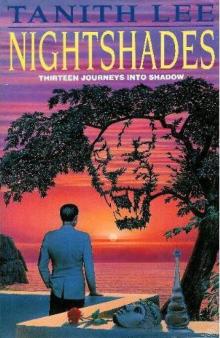 Nightshades
Nightshades Forests of the Night
Forests of the Night Wolf Wing
Wolf Wing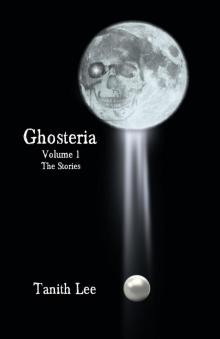 Ghosteria Volume 1: The Stories (Ghostgeria)
Ghosteria Volume 1: The Stories (Ghostgeria) Obsidian: A Decade of Horror Stories by Women
Obsidian: A Decade of Horror Stories by Women The Secret Book of Paradys
The Secret Book of Paradys Red as Blood: or tales from the Sisters Grimmer
Red as Blood: or tales from the Sisters Grimmer The Book of the Damned
The Book of the Damned Faces Under Water
Faces Under Water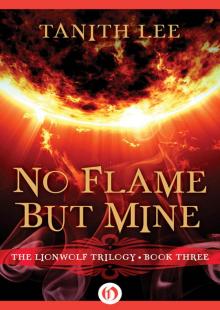 No Flame But Mine
No Flame But Mine Night's Master
Night's Master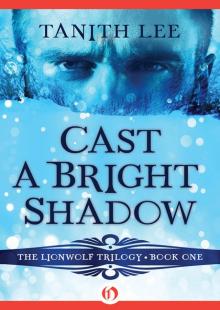 Cast a Bright Shadow
Cast a Bright Shadow Red as Blood, or Tales from the Sisters Grimmer: Expanded Edition
Red as Blood, or Tales from the Sisters Grimmer: Expanded Edition Delusion's Master (Tales From the Flat Earth)
Delusion's Master (Tales From the Flat Earth) Personal Darkness
Personal Darkness The Silver Metal Lover
The Silver Metal Lover Cruel Pink
Cruel Pink Metallic Love
Metallic Love Drinking Sapphire Wine
Drinking Sapphire Wine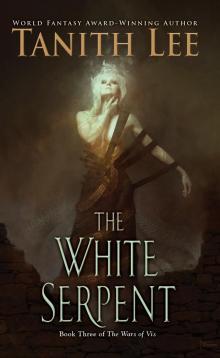 The White Serpent
The White Serpent Louisa the Poisoner
Louisa the Poisoner Don't Bite the Sun (Four-BEE Book 1)
Don't Bite the Sun (Four-BEE Book 1) Turquoiselle
Turquoiselle Death's Master
Death's Master The Storm Lord
The Storm Lord Black Unicorn (Dragonflight)
Black Unicorn (Dragonflight) Redder than Blood
Redder than Blood Dark Dance
Dark Dance Ivoria
Ivoria Night's Sorceries
Night's Sorceries Venus Preserved (Secret Books of Venus Series)
Venus Preserved (Secret Books of Venus Series) Anackire
Anackire A Bed of Earth
A Bed of Earth Red Unicorn
Red Unicorn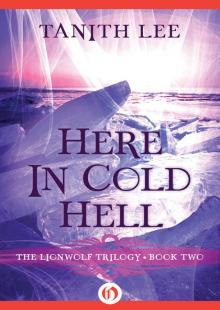 Here in Cold Hell
Here in Cold Hell Shadowfire
Shadowfire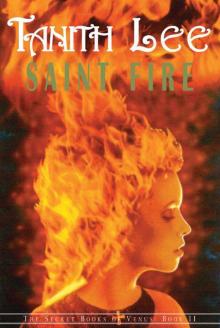 Saint Fire (Secret Books of Venus Series)
Saint Fire (Secret Books of Venus Series) Darkness, I
Darkness, I Death Dances
Death Dances White As Snow (Fairy Tale)
White As Snow (Fairy Tale)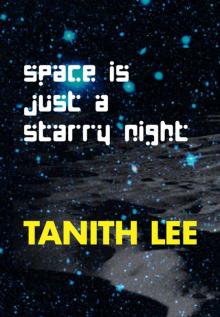 Space Is Just a Starry Night
Space Is Just a Starry Night Biting the Sun
Biting the Sun Hunting the White Witch
Hunting the White Witch Legenda Maris
Legenda Maris Kill the Dead
Kill the Dead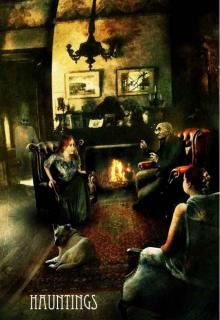 Hauntings
Hauntings Black Unicorn
Black Unicorn Law of the Wolf Tower
Law of the Wolf Tower Disturbed by Her Song
Disturbed by Her Song Delerium's Mistress: Tales of the Flat Earth Book 4
Delerium's Mistress: Tales of the Flat Earth Book 4 Mortal Suns
Mortal Suns The Silver Metal Lover s-1
The Silver Metal Lover s-1 The Book of the Beast
The Book of the Beast Weird Tales #327
Weird Tales #327 The Birthgrave
The Birthgrave